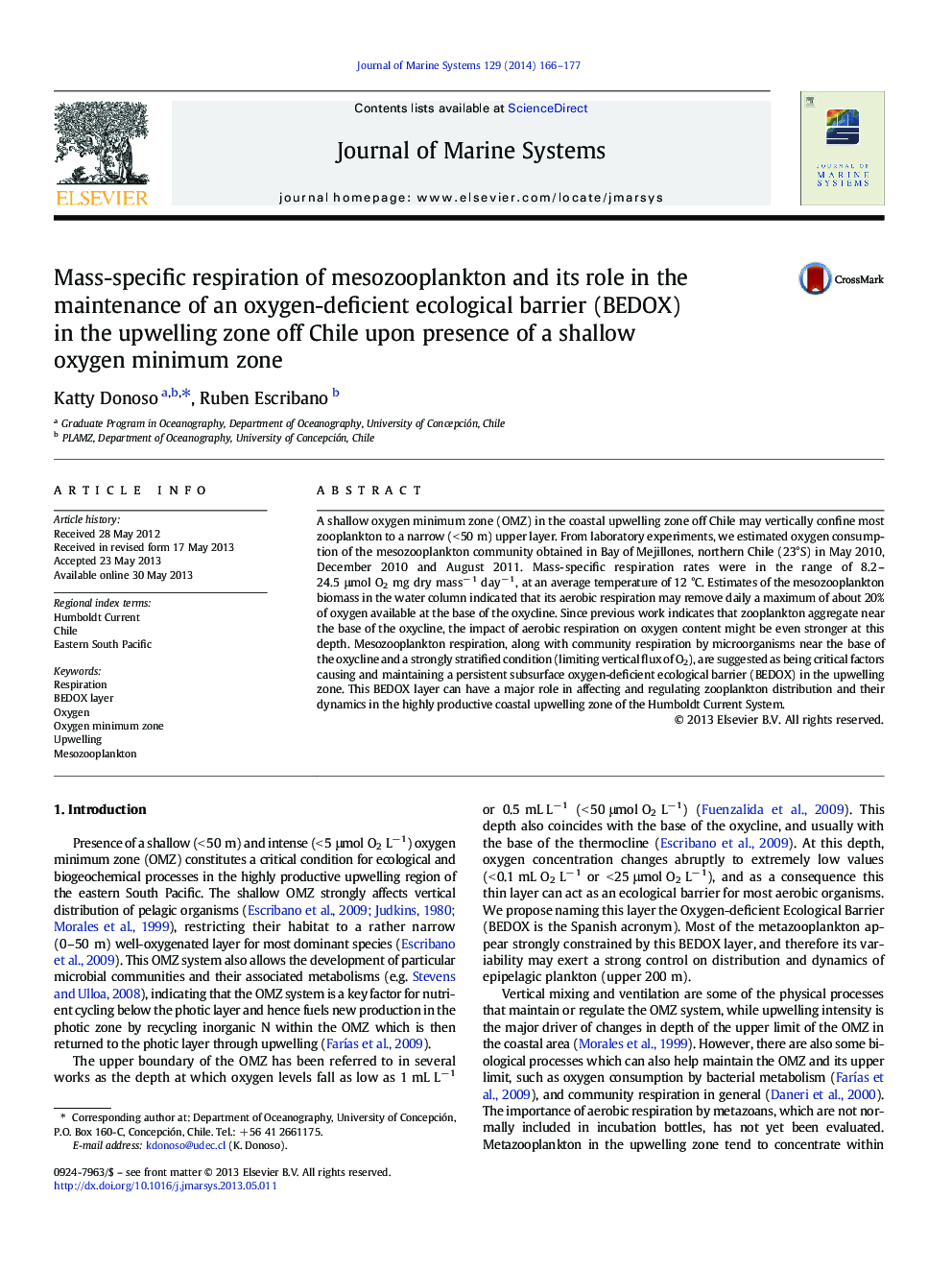| Article ID | Journal | Published Year | Pages | File Type |
|---|---|---|---|---|
| 6387128 | Journal of Marine Systems | 2014 | 12 Pages |
â¢This work describes how aerobic respiration of zooplankton promotes an oxygen-deficient layer in an upwelling zone.â¢The existence of an oxygen-deficient ecological barrier (BEDOX) for pelagic organisms is for the first time defined.â¢New insights on how zooplankton metabolism can affect the chemical environment of the water column is provided.
A shallow oxygen minimum zone (OMZ) in the coastal upwelling zone off Chile may vertically confine most zooplankton to a narrow (< 50 m) upper layer. From laboratory experiments, we estimated oxygen consumption of the mesozooplankton community obtained in Bay of Mejillones, northern Chile (23°S) in May 2010, December 2010 and August 2011. Mass-specific respiration rates were in the range of 8.2-24.5 μmol O2 mg dry massâ 1 dayâ 1, at an average temperature of 12 °C. Estimates of the mesozooplankton biomass in the water column indicated that its aerobic respiration may remove daily a maximum of about 20% of oxygen available at the base of the oxycline. Since previous work indicates that zooplankton aggregate near the base of the oxycline, the impact of aerobic respiration on oxygen content might be even stronger at this depth. Mesozooplankton respiration, along with community respiration by microorganisms near the base of the oxycline and a strongly stratified condition (limiting vertical flux of O2), are suggested as being critical factors causing and maintaining a persistent subsurface oxygen-deficient ecological barrier (BEDOX) in the upwelling zone. This BEDOX layer can have a major role in affecting and regulating zooplankton distribution and their dynamics in the highly productive coastal upwelling zone of the Humboldt Current System.
